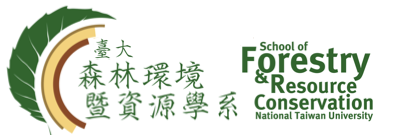History
1. Establishment of the Department of Forestry and the Creation of Experimental Forests after World War II
After the restoration of Taiwan in 1945, the government took over the Taipei Imperial University and established the National Taiwan University, the only university in Taiwan then. As forests covered more than 60% of Taiwan's land, the government believed that forest restoration and forestry development were important directions for government policies after the war. However, the National Taiwan University did not have a Department of Forestry then. Given the urgent need to cultivate forestry talents, the university discussed with its administration the establishment of the Department of Forestry. After approval from the Ministry of Education, the department began to enroll students in August 1947.
During the Japanese colonial period, universities in Japan with forestry programs established "Practice Forests" in various locations to meet the needs of student internships and teacher research. The forestry income also became a source of funding for the universities. In 1904, the Taiwan Governor-General's Office transferred the forest land from Chenyoulan Creek in Douliu to Yushan Mountain and the forest land from Qingshui Creek in Neijupi to Zhuoshui River (the area from Fenghuang Mountain in Lugu Township, Nantou County to Yushan Mountain in Xinyi Township, Nantou County today) to the "Taiwan Practice Forest of the Imperial University of Tokyo, Agricultural College." After the establishment of the Forestry Bureau after the war, it took over forestry units from all over Taiwan. The Taiwan Practice Forest of the Imperial University of Tokyo Agricultural College was renamed the "First Model Forest Farm".
After establishing the Department of Forestry, Professor Chu Hui-Fang, the department chair at the time, was deeply impressed by the advanced forestry countries like Germany and Japan, which established experimental forests. He sought to obtain Taiwan's entire plant climate zone, covering tropical, subtropical, warm, temperate, cool, cold, and subrigid zones. He was formerly the Taiwan Practice Forest of the Imperial University of Tokyo Agricultural College. After negotiations with the Taiwan Provincial Government by President Fu Si-Nian, the area was transferred to the National Taiwan University as the first model forest farm in 1949. The Experimental Forest Management Office was established in Jhushan and renamed the "The Experimental Forest, College of Agriculture, National Taiwan University" in 1950.
2. Development of the Department
● Since its establishment in 1947, the Department has only admitted undergraduate students. However, in response to the demand for forestry research talents in Taiwan, the Forest Research Institute was established in 1964 to admit graduate students for master's programs. Four groups, including "Silviculture," "Forest Management," "Forest Products," and "Dendrology," were formed to enroll students.
● After the establishment of the master's programs, the undergraduate programs also began to enroll students in 1967, with four groups, including "Silviculture," "Forest Management," "Forest Industry," and "Forest Plants," to prepare for the Department's upgrade to a College of Forestry.
● In 1974, the Forest Research Institute established a doctoral program, making the Department the only complete higher education system for forestry in Taiwan.
● In 1987, in response to the needs of the times, the "Dendrology" group in the Forest Research Institute and the "Forest Plants" group in the undergraduate programs were renamed "Forest Resource Conservation."
● In 1991, the "Forest Management" group in the Forest Research Institute and the "Forest Management" group in the Department were renamed "Resource Management."
● To cultivate excellent professionals in forest management, conservation, and sustainable utilization for the 21st century, the Department was officially renamed the "School of Forestry and Resource Conservation" in 2004. The group system was abolished, and four clusters, including "Forest Biology," "Forest Environment," "Biological Materials," and "Resource Conservation and Management," were established in the curriculum. In addition to the required courses, students can choose courses from the four clusters based on their interests and future development.
Watch the department's introduction video (link to YouTube).
History of the Forest Building (excerpt from "Yelin Fengqing-Building Edition: The 50th Anniversary of the Foundation of the Forest Museum" by Tsung-Hsin Lu, reprinted from the "NTU Alumni Bi-monthly" Issue 67, in Chinese).

